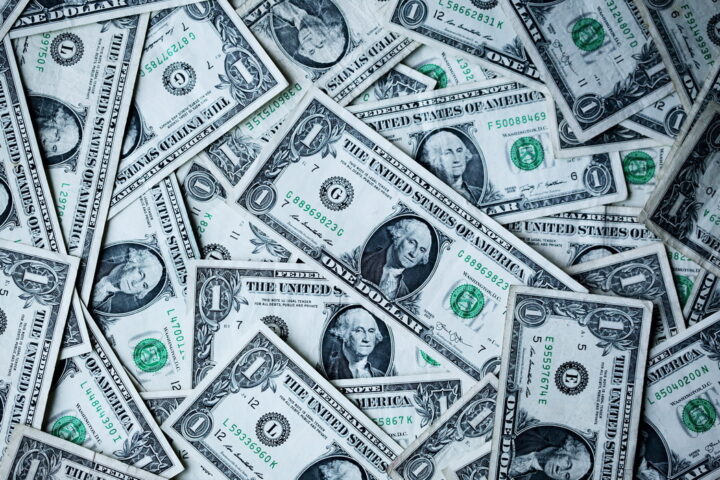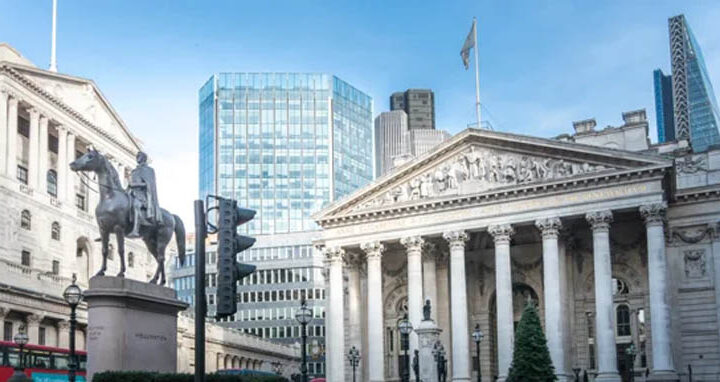By Jeffrey Halley
Wall Street did another U-turn overnight, finishing lower as the dearth of tier-1 data and the pre-FOMC media blackout left the FOMO gnomes chasing their tails once again.
Wall Street closed modestly lower, ostensibly because Apple said it would slow hiring, joining its other tech-giant brethren. That was despite Goldman Sachs and Bank of America producing decent earnings results, although investment banking revenue took a hit as IPOs and SPACs have dried up.
More than likely, the stock market pullback was just noise on a slow news day. The losses overnight have been dwarfed by the gains from Friday, so the bear market rally thesis still has life; it just won’t be a linear progression.
Elsewhere, currency markets ignored Wall Street, with the Dollar falling again overnight.
The greenback mostly retreated versus the majors, while Asian FX booked only modest gains.
USD was long overdue a correction, and this is playing out nicely. The interest rate differential play remains real in Asia. Readers should beware of the “dollar smile”; running into the FOMC, the US Dollar’s grin may get wider again.
US yields also edged higher overnight, but it seems like noise, nothing special.
Gold remains in an induced coma near $1700.00 an ounce, and risks remain skewed towards more gold bugs getting squashed.
Oil had another frisky session, Brent and WTI rallying by 5.0% overnight. That seems to be becoming the norm for oil prices these days, and with intraday volatility like that, risk managers are probably telling the trading desk to cut position sizes intraday, creating a negative feedback loop on the liquidity front.
It’s hard to say what made New York want to push oil higher, but I suspect they belatedly realised that Joe Biden came away with nothing from the Saudis. The + in OPEC+ is clearly more important to OPEC at the moment.
Gazprom also announced some force majeures on European gas customers overnight, apparently, something that doesn’t bode well for the reopening of Nord Stream 1 this week. Gas-mageddon Thursday is clearly playing its part in the oil rally, and it makes the European stock market rally even more surprising overnight.
The major news flow washing over Asia on Tuesday appears to be China’s announcement overnight that it may allow mortgage payment holidays for local buyers on uncompleted housing projects.
Although the structure isn’t at all clear yet, local authorities and state-owned banks may be “invited” to take up the slack. It appears to be a response to the mortgage payment protest by citizens in China, something the CCP is acutely sensitive to, and may mark the first steps by government entities to take on the credit risk from developers to get projects completed.
Shanghai industrial commodity futures are on fire in early Tuesday trading; nickel, aluminium, coking coal (to make steel), and rebar prices, amongst others, are all between 3% and 6% higher, suggesting markets believe government intervention is about to unlock the construction sector.
Tuesday afternoon, Eurozone inflation data for June looks set to print at 8.60%. Given that it is final and not flash or preliminary, I expect that to be priced in.
UK employment and earnings in the afternoon could throw a recession curve ball if both surprise to the upside. That will lead to some recalculations on BOE tightening and could support sterling.
US Housing Starts and Building Permits for June look to be the day’s data highlights. I wouldn’t rule out an upside surprise with retail sales and consumer confidence data holding up nicely last week. Since stock markets rallied after that higher data last week, I wouldn’t bet against the same thing happening again later Tuesday.
A day of headline-watching beckons.
Oil prices explode higher
Brent crude and WTI prices exploded higher overnight after Gazprom declared a backdate force majeure on some major European customers. That raised fears that gas flows would not return through the Nord Stream 1 pipeline to Germany at the end of the week, causing a knock-on impact on oil prices.
Markets also seem to have concluded that President Biden returned from Saudi Arabia empty-handed.
Brent leapt 4.80% higher to $105.65 overnight, adding another 0.35% to $106.00 a barrel in muted Asian trading. Brent has nearby resistance at $106.50, followed by $108.00. Support is distant at $99.50.
WTI leapt 4.55% higher overnight to $102.05, adding 0.45% to $102.45 in Asia. It has now-distant support at $96.00, with resistance nearby at $103.00 and $105.00.
The intraday volatility in oil prices is rendering technical levels somewhat meaningless for now, and it seems that extra volatility is feeding into less intraday liquidity, exacerbating movements in a negative feedback loop.
When combined with the fact the futures curves are still in backwardation, a bullish set-up for prices that reinforces that despite speculative volatility, the underlying supply/demand imbalance is as tight as ever. Oil prices may have peaked, but they don’t look like they’re going materially lower from here unless we get a huge surprise from OPEC+.
Gold remains unimpressive
Gold had another unimpressive session overnight, peeping above $1720.00 intraday but closing almost unchanged at $1709.00 an ounce. It edged 0.10% lower to $1708.00 an ounce in another comatose session in Asia.
The yellow metal’s’s inability to hold onto even modest rallies in prices, even as the US Dollar falls and US bonds trade sideways, is a major concern. It suggests that risks remain heavily skewed towards the downside.
The US Dollar index is over 150 points off its peak from last Friday, yet gold remains glued to 11-month lows. It seems that only a much deeper correction lower by the US Dollar will grant gold a stay of execution.
Gold has initial support at $1700.00, followed by the more important $1675.00 zone. A sustained failure of $1675.00 will signal a much deeper move lower, targeting the $1450.00 to $1500.00 regions in the weeks ahead. Gold has resistance nearby at $1725.00 and then $1745.00.
Jeffrey Halley is Senior Market Analyst, Asia Pacific at OANDA
Opinions are the author’s, not necessarily that of OANDA Global Corporation or any of its affiliates, subsidiaries, officers or directors. Leveraged trading is high risk and not suitable for all. Losses can exceed investments.








